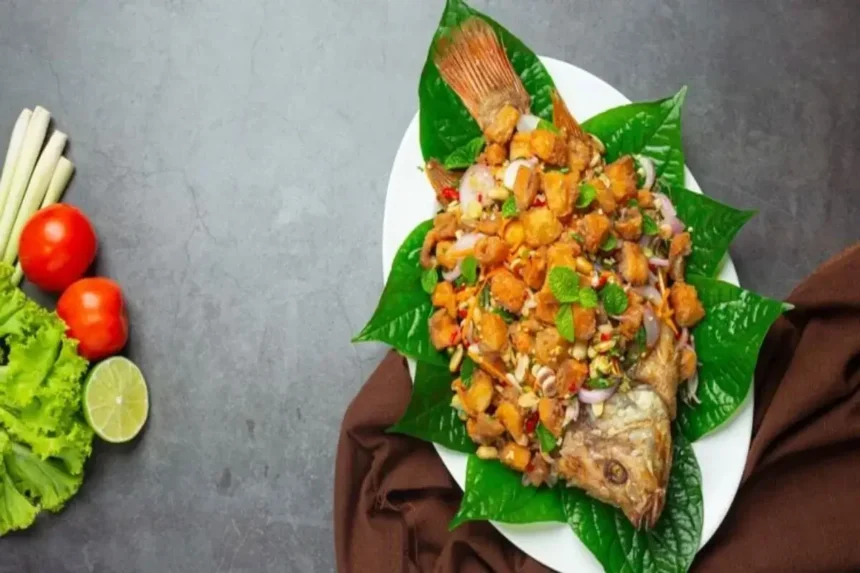Introduction
In the realm of plant-based foods, chickpeas have emerged as a powerhouse ingredient, and “çeciir” offers a unique perspective on how to maximize their culinary potential. Çeciir, a Turkish word for chickpeas, symbolizes the rich heritage and versatility of this ancient legume. From hummus and falafel to more sophisticated gourmet dishes, chickpeas have become a staple worldwide. Here, we’ll explore the history, benefits, and countless culinary uses of çeciir, highlighting its importance in various cultures and cuisines.
Body Sections
What is Çeciir?
Chickpeas, or “çeciir,” are a member of the legume family and are known for their nutty flavor and grainy texture. They are high in protein, fiber, and essential vitamins and minerals. Chickpeas have been cultivated for thousands of years in regions like the Middle East, Mediterranean, and India. The word çeciir is often associated with traditional Turkish dishes, although chickpeas are enjoyed across the globe.
Statistical data from the Food and Agriculture Organization (FAO) shows that global chickpea production has increased by 20% in the last decade, with India and Turkey leading the charge in cultivation.
Chickpea Types:
- Kabuli – Larger, cream-colored chickpeas, popular in Mediterranean and Western cuisine.
- Desi – Smaller, darker chickpeas with a rougher coat, commonly used in Indian and Middle Eastern cooking.
Importance and Benefits of Çeciir
Chickpeas are not only delicious but are also incredibly nutritious. They are an excellent source of plant-based protein, making them a favorite among vegetarians and vegans. Here are some key health benefits of including chickpeas in your diet:
- Rich in Nutrients: Chickpeas contain a variety of essential nutrients like iron, folate, magnesium, and vitamin B6.
- Improves Digestion: Thanks to their high fiber content, chickpeas aid in digestion and promote gut health.
- Weight Management: Due to their protein and fiber content, chickpeas help keep you fuller for longer, making them an excellent food for weight management.
- Supports Heart Health: Chickpeas can help reduce LDL (bad) cholesterol levels, contributing to heart health.
According to a study by the American Journal of Clinical Nutrition, individuals who consume legumes regularly, such as chickpeas, show a 22% lower risk of developing heart disease.
Applications and Use Cases
Chickpeas are incredibly versatile, lending themselves to a variety of dishes. Let’s explore how çeciir is used in different cultures:
- Middle Eastern Cuisine: Hummus and falafel are perhaps the most well-known chickpea-based dishes, originating from this region. Both are staples in Middle Eastern cuisine.
- Indian Cuisine: Chickpeas, especially the desi variety, are used in curries such as chana masala and are often ground into gram flour for pakoras and other snacks.
- Turkish Cuisine: In Turkey, çeciir is used in a variety of traditional dishes, from stews to salads. It is also roasted to make leblebi, a popular Turkish snack.
- Western Cuisine: In the West, chickpeas are now popular in salads, soups, and even baked goods, owing to their versatility and health benefits.
Challenges and Solutions in Chickpea Cooking
Despite its versatility, cooking with chickpeas can pose certain challenges:
- Challenge 1: Long Soaking Times
Solution: Opt for canned chickpeas or use a pressure cooker to cut down on soaking and cooking time.
You may also like: https://sitthemoon.com/journeyman-camera/
- Challenge 2: Texture Variations
Solution: To achieve the right texture in dishes like hummus, blend cooked chickpeas thoroughly with olive oil and lemon juice. For salads, ensure chickpeas are not overcooked to maintain firmness. - Challenge 3: Digestive Discomfort
Solution: Rinse chickpeas thoroughly to reduce their oligosaccharide content, which is often the culprit behind gas and bloating.
The Global Popularity of Çeciir
Chickpeas, once considered a humble ingredient, have now taken center stage in the plant-based food revolution. As plant-based diets become more mainstream, chickpeas are being used in innovative ways such as:
- Chickpea Pasta: A gluten-free alternative made from chickpea flour, rich in protein and fiber.
- Chickpea Snacks: Roasted chickpeas are now a popular crunchy snack, often flavored with spices like paprika or curry powder.
- Aquafaba: The liquid from cooked chickpeas is now being used as an egg substitute in vegan baking, a revolutionary discovery in plant-based cuisine.
Statistical Growth and Industry Trends
The global chickpea market is expected to grow significantly in the coming years. According to the Global Pulse Confederation, the demand for chickpeas is projected to increase by 5% annually. This growth is largely driven by the increasing popularity of plant-based diets and gluten-free products.
Conclusion
In conclusion, çeciir (chickpeas) is an incredibly nutritious and versatile ingredient that has found its way into cuisines across the world. Its rise in popularity due to its health benefits, sustainability, and versatility in cooking is undeniable. From traditional dishes to modern innovations like chickpea pasta, the applications of this humble legume are vast and exciting.
Chickpeas continue to be an important part of healthy eating and culinary innovation. Whether you’re a home cook looking to experiment with new recipes or someone seeking healthier dietary options, chickpeas are an excellent addition to your pantry.
FAQs
- What is Çeciir?
Çeciir is the Turkish word for chickpeas, a legume widely used in global cuisine for its nutritional benefits and versatility. - Are chickpeas good for weight loss?
Yes, chickpeas are high in protein and fiber, which help keep you fuller for longer and aid in weight management. - How do you cook chickpeas?
Chickpeas can be soaked overnight and then boiled or pressure-cooked. You can also use canned chickpeas for convenience. - What are some popular dishes made with chickpeas?
Popular chickpea-based dishes include hummus, falafel, chana masala, and salads. - Can chickpeas cause digestive issues?
Some people may experience bloating due to the oligosaccharides in chickpeas. Rinsing them thoroughly can help reduce this issue.










